This page wouldn't have been possible with out the help of Mr P Gaffney - Thanks Pete.
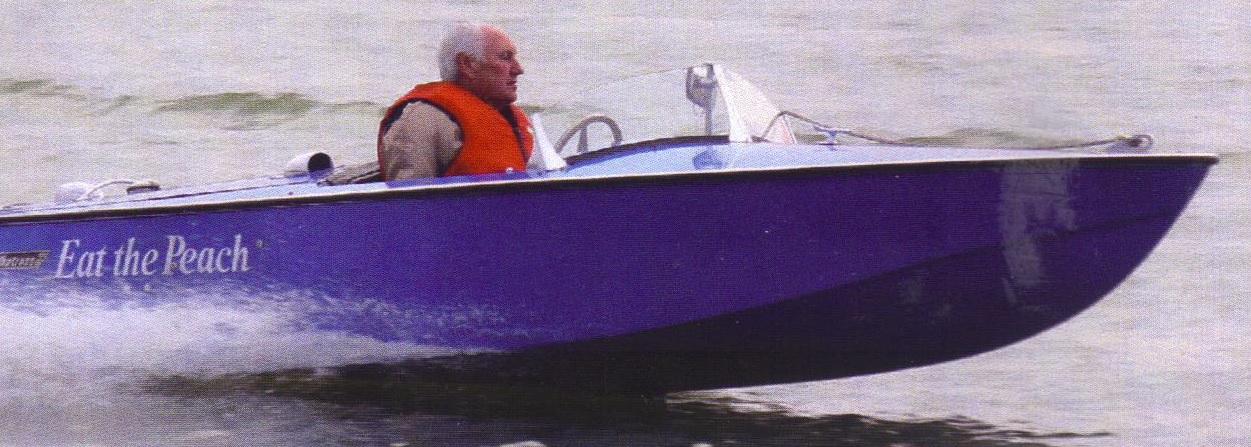
The
first boats that came out of the new Albatross marine in 1949 were
two Hydroplanes Corsair and Symphony, followed by Rooster in
1953.
Corsair
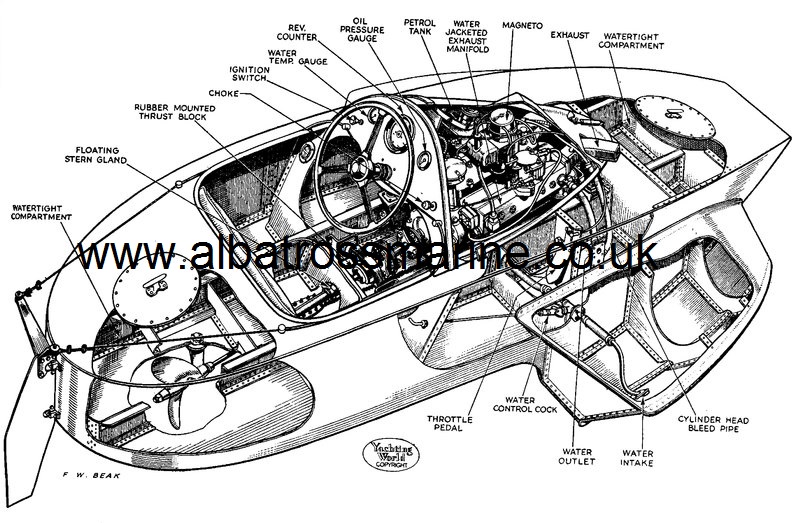
This page wouldn't have been possible with out the help of Mr P Gaffney - Thanks Pete.

The
first boats that came out of the new Albatross marine in 1949 were
two Hydroplanes Corsair and Symphony, followed by Rooster in
1953.
Corsair

Symphony
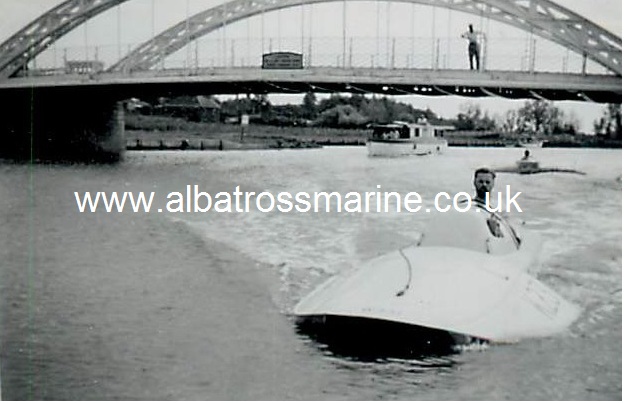
Rooster
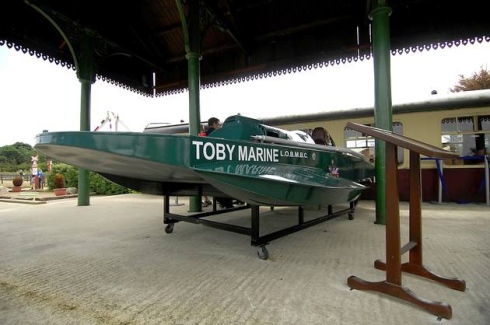
Toby Sutton in Rooster seen wining the battle of Britain
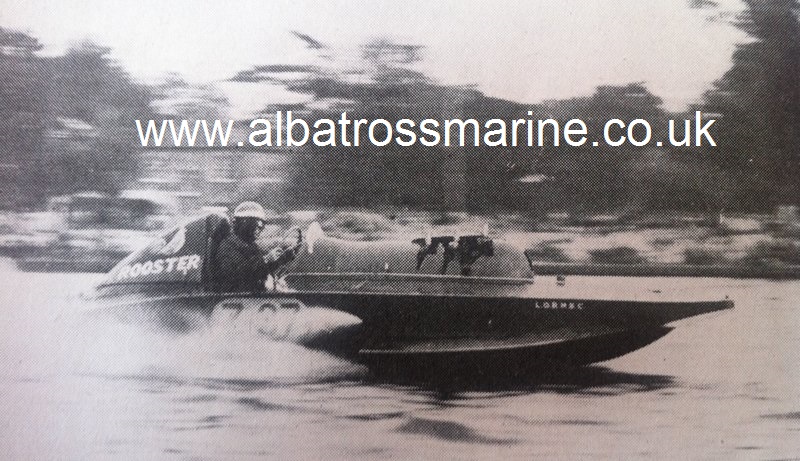
The Prototype runabout
The Prototype
Length 12.8 Feet
Weight 500 lbs
Ford 10Hp
Max speed 30.5 mph
Year 1951
Power 6v
Numbers 1
Price £ 375.00
The
windscreen is higher than normal and has cast brackets instead of
fabricted ones found on later boats. The boat has an exhaust that
comes out of the transom and a side opening bonnet with only one
air scoop. There is a fabricated header tank in front of the engine
and the fuel tank is filed by opening the bonnet. There is a cast
front and rear central cleat and the sump is a modified automotive
one.
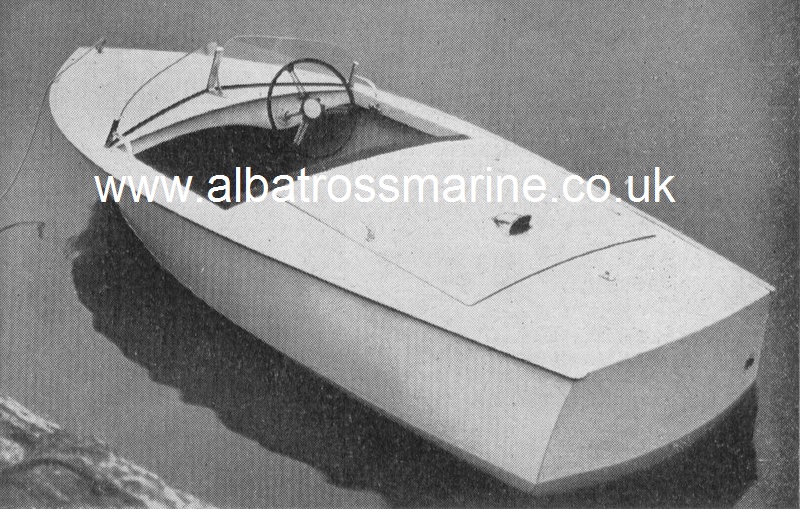
The Ford 10 side valve engine
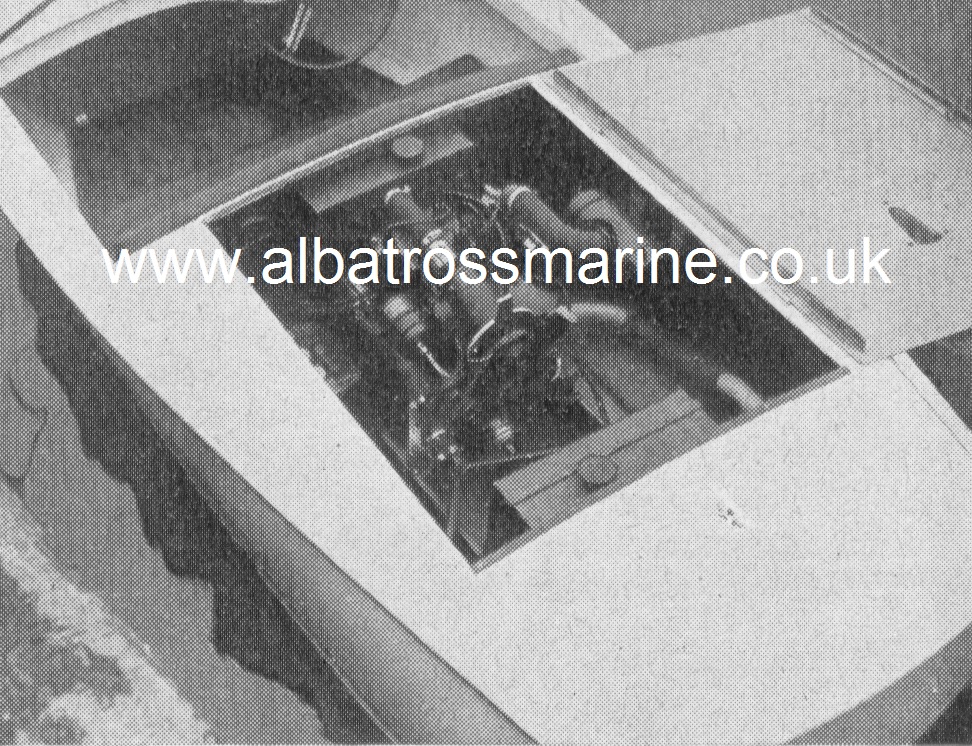
Mk 1 Later to become the standard sport
Length 12.8
Feet
Weight 560lbs
Ford 10 26 Hp Single Su carb
Max speed 32 Mph
Year 1951
numbers 1- 10
Power 6 v
Price £ 500.00 Mk1
Price £ 475.00
Standard Sport
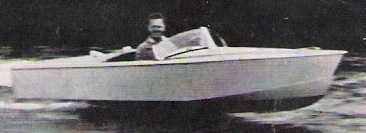
The MK 1 was the start of a proper production boat that would see parts carried through to all the models. While the hull was the same as the proto, the boat got a rear hinged bonnet with built in tool box and two air scoops, not the cast ones seen on later boats, but the same one seen on the proto. The windscreen brackets are now fabricated and the glass is lower. There are now two fabricated alloy cleats in the rear side decks. The exhaust now exits out of one of the two rear transom vents and there is also a rear flag pole holder. In the cockpit there is a shelf under the dash, the steering wheel has changed to a three spoke and the dash has a choice of a few gauges as well as a glove box. Under the bonnet there is now a cast header tank on top of the engine as well as a new exhaust manifold in cast alloy. You had a single SU. There is also the all new cast sump with oil cooler, the fuel tank has changed shape and now has a deck filler. There is a spare prop and holder behind the passenger in the engine bay. The rudder changed shape to have the cut out in the bottom front to allow the prop and shaft to be removed as one unit. You can see that the hand throttle is from a lawn mower or similar, and not the one seen on all the other Albatross boats. The seats are much simpler than seen on later boats, and there is no steering center badge or side ones.
Mk 1 engine bay

Mk1 and 2 engine bay: note the bearers and cooling pans that
are diffrent from the Mk3
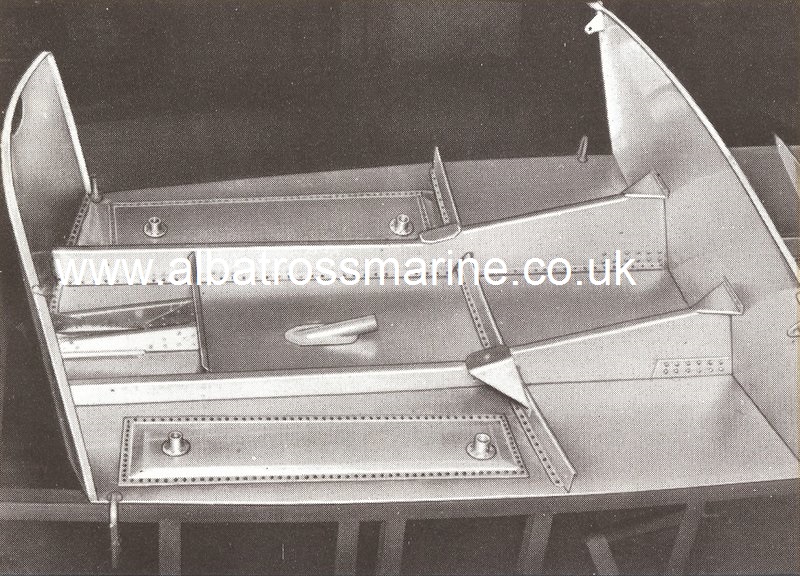
The Mk 2 Super sports runabout
The Mk2
Length 12.8 Feet
Weight 530 lbs Ford 10 480 lbs Climax
Ford Ford 10 35 Bhp Aquaplane head twin Su carbs
Max speed 34 mph
Climax fwa 72 Bhp
Max speed 40mph
Year 1952 – 1955
Power 6v
Numbers 10 - 241
Price £ 550.00 Super sport
Price £ 850.00 Climax Boat
Ford 10 Mk 2 engine
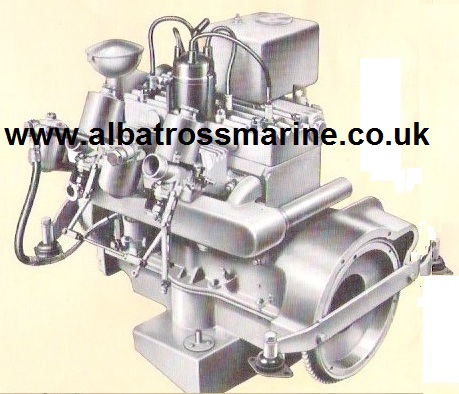
Three Mk2 at speed
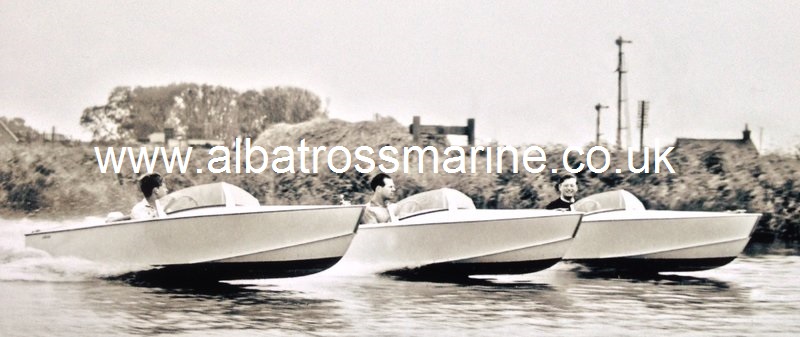
The
big change in the Mk2 was the introduction of the new head and
carbs on the engine. That gave 11 HP more, as well as raising the
top speed by 2 Mph which may not sound much, but the boat now had a
lot more power to pull a skier out of the water. The other changes
were air scoops changed to cast ones. The steering wheel gained the
Albatross badge in the center and the rear sides now had the side
sticker Albatross badges. While the Mk2 was sold as the super
sport, the Mk 1 continued to be sold as the standard sport, but
apart from the subtle changes the only diffrence
was
the engine.
Mk2 line drawing
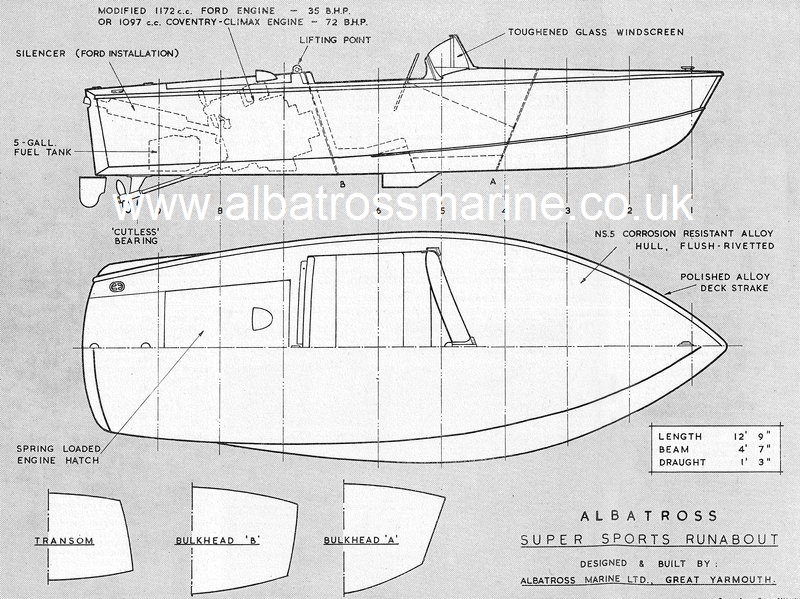
The Mk2 really gave Albatross Marine great market traction, and by the time they launched the Mk3 in 1956 they had sold over 241 boats to over 24 countries around the world, making it the best selling British boat ever at the time.
Albatross Ford E93A Super Sport

The racing version
For those who required a bit more power there was a new racing version of the Albatross MK2 introduced in1955, which was fitted with a Coventry – Climax 1097cc FWA engine. This engine is also used in some sports racing cars, such as Cooper-Climax and Lotus Climax. It is a high performance over head cam shaft unit and was capable of delivering some 72 Bhp at 6200rpm. With this engine fitted it was found that a speed of 40 MPH was achieved at 5800 RPM. I know from the Climax factory records that there were 15 FWA climax engines sold to Albatross marine though 1955 and 56 and they were priced at £850 pounds.
Climax FWA power
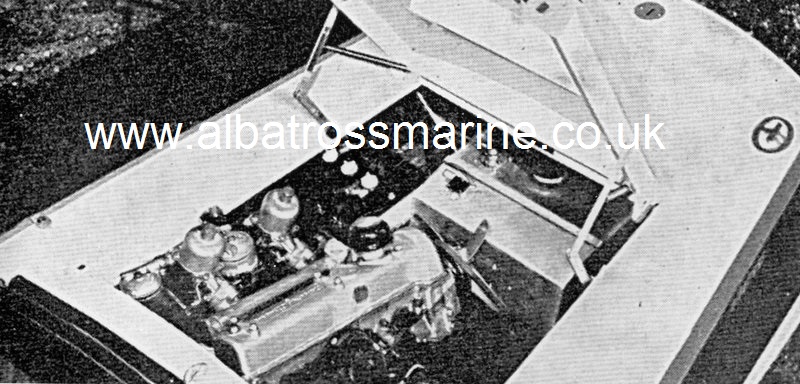
Coventry climax Fwa
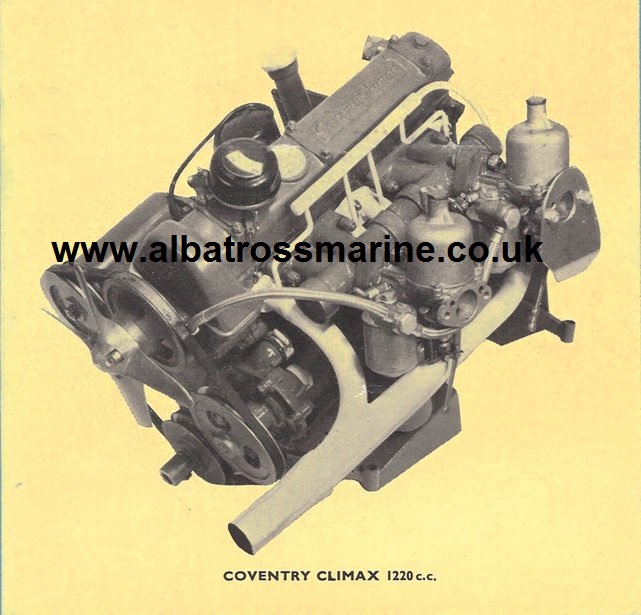
Below the factory race boat with factory race numbers Z 10
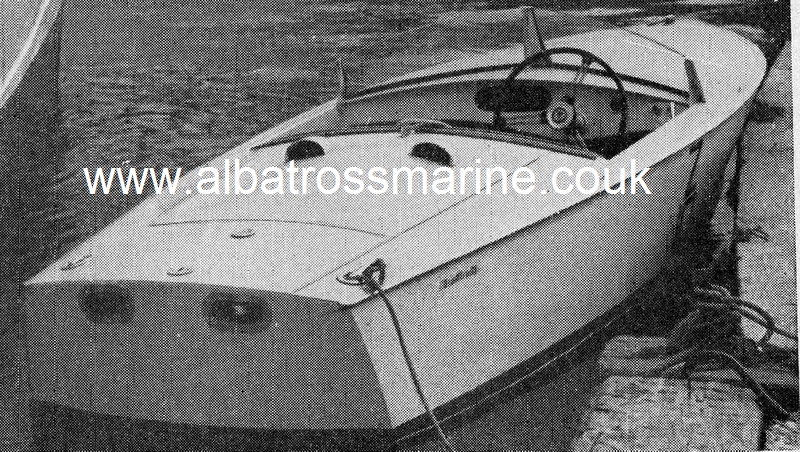
Albatross work force 1956/7
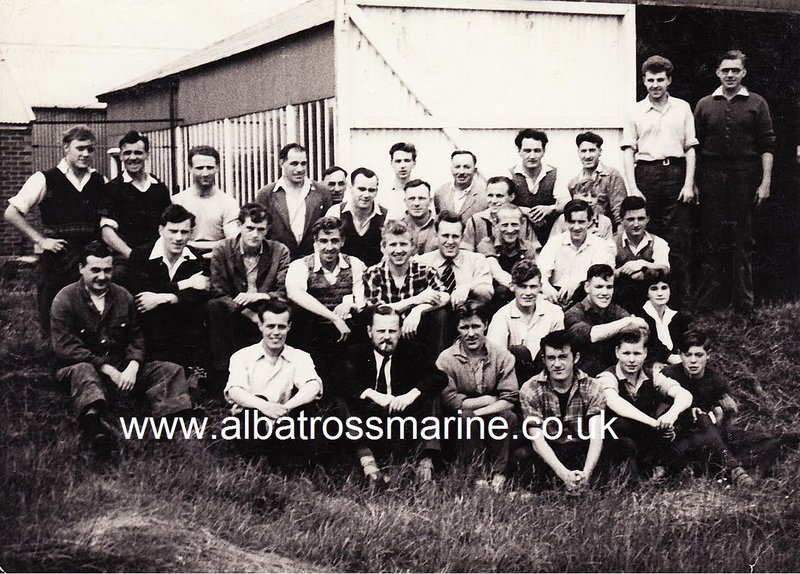
Mk 3
Sport Runabout
The Mk3
Length 12.8 Feet
Weight 600 lbs
Ford 100e 39 Bhp single Su H4
Max speed 33 mph
Year 1956 – 1961
Power 12v
Numbers 241 - 755
Price
£ 550.00
MK 3 Ford 100e engine
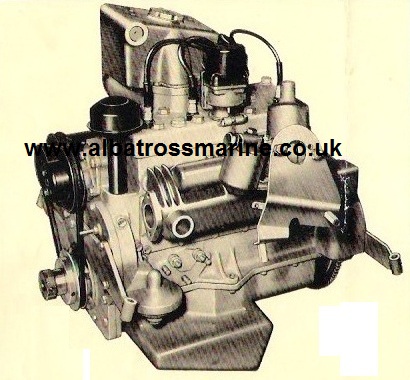
Mk3 at rest
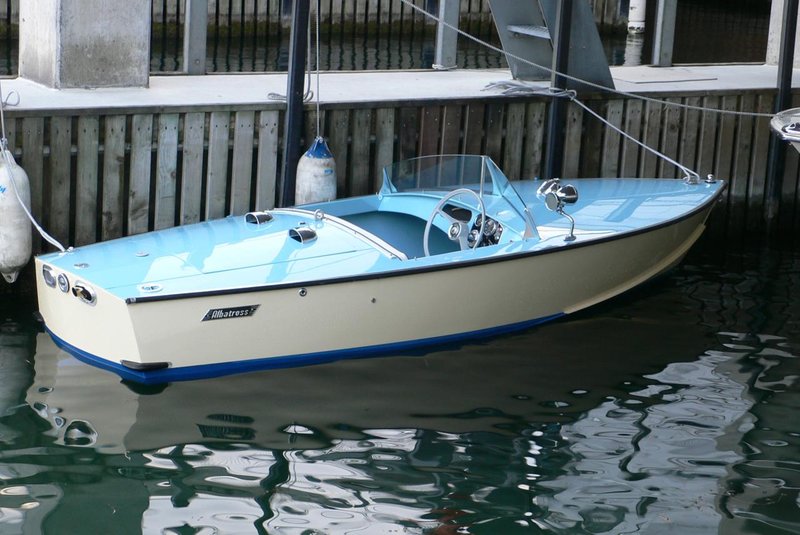
The mk3 saw the introduction of the 100e engine and this meant that some changes were needed in the engine bay to accommodate it. There were new engine mounts that were thicker than seen in the Mk 1 and 2 and were effectively two parts. The front being a wedge shape. The water tanks on the floor changed shape from square looking ends to round ends, and also the battery tray changed from an across the boat one to a length ways version. The starter motor was now a pull bendix instead of a push one as seen on the Ford 10, and this meant the new one passed through the bulkhead being longer. There was also now an oil filter. The sump oil cooler had changed to enter and exit at the front of the sump instead of the top of the sides. The inlet and exhaust manifold castings changed again slightly and now there was only the choice of a single carb. The whole prop shaft assembly was different from the Mk 2. The shaft winds into the engine with a left hand large bronze nut and the prop was held on the shaft buy a nuled split collar and a top hat left handed nut. Gone was the tool box under the bonnet in its place a folded box on the driver’s side in the engine bay as was the spare prop holder in the engine bay and the shelf under the dash was gone also. The alloy on the bottom of the boat got a little thicker and as a result the boat got a bit heaver. The side badges were now pressed alloy and in later boats the rear air vents became pressed instead of flat. Gone was the cast front cleat and in its place was a flat fabricated cleat passing through the deck. There was now a navigation light on the foredeck as well.
There
was an addition for the first time of a rubber insert rub rail on
boats with numbers higher than 430.
Bullfrog
Nav light
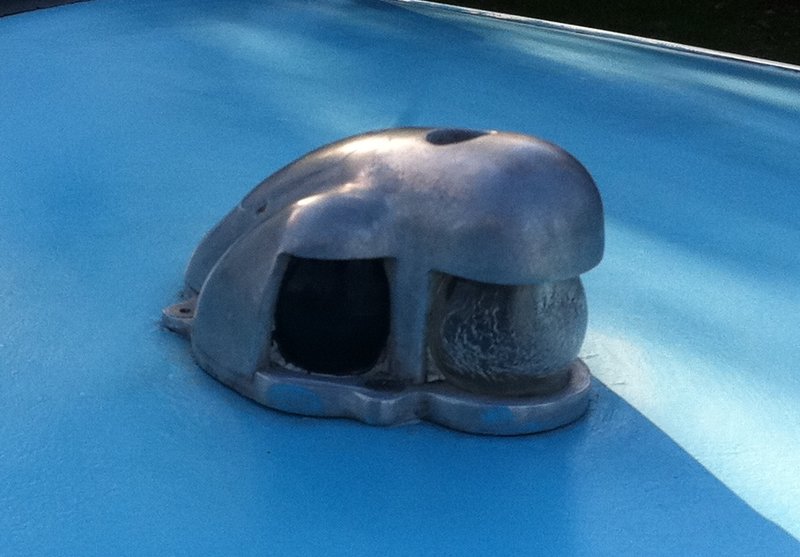
There was also the introduction of the 100e which replaced the Ford 10 giving a power increase from 35Hp to 39Hp
Ford 100E
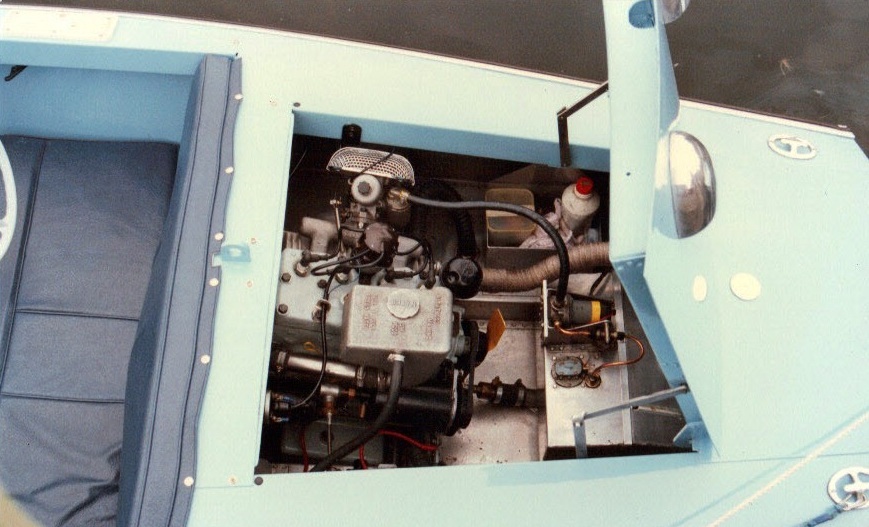
There were a number of different dash layouts on the Mk3. The majority had glove boxes but some of the later boats I have seen are without them. The early models seem to have the instruments placed straight in the dash. Whereas the middle number boats had a melamine panel with all the guages clustered around the steering wheel like you would find on the Mk 1 Continental.
You were also able to order your boat with the new oil operated albatross gear box
Working Drawing of Albatross Gearbox
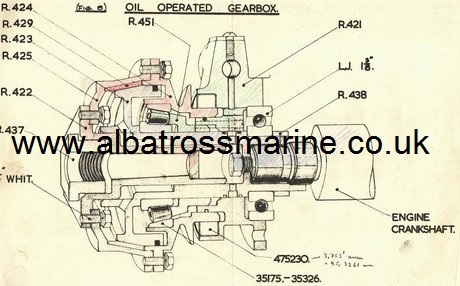
Gearbox in a Mk3
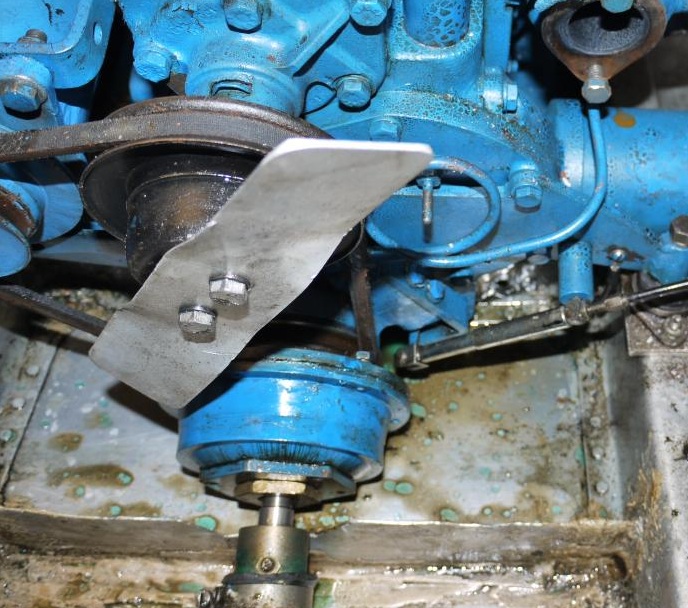
The first continental
This is the third scale model off Gay Jane. Which later became the hull shape of the Continental. Due to the fact that they still had the jig, that had been used to make this scale model of Gay Jane.
Archie and Peter with the 1/3 scale model of Gay Jane.
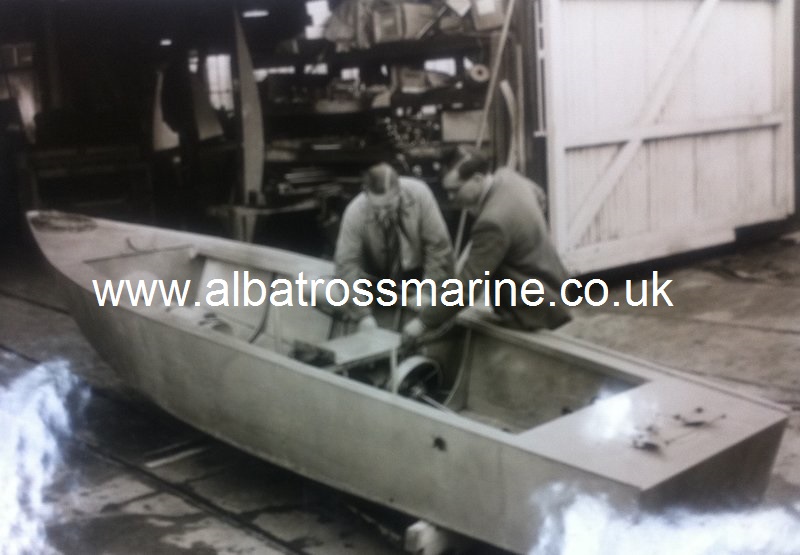
The Continental Mk1
The Mk1 Continental
Length 15.3 Feet
Weight 784 lbs 100e 734 lbs Climax
Ford 100e Max speed 32 Mph 38 BHP
Climax Fwe Max speed 44 Mph 80 Bhp stage one
Year 1956 – 1961
Power 12v
Numbers 1001 - 1200
Price £ 625.00 Ford 100e
Price £ Climax
Ford 100 e with gearbox
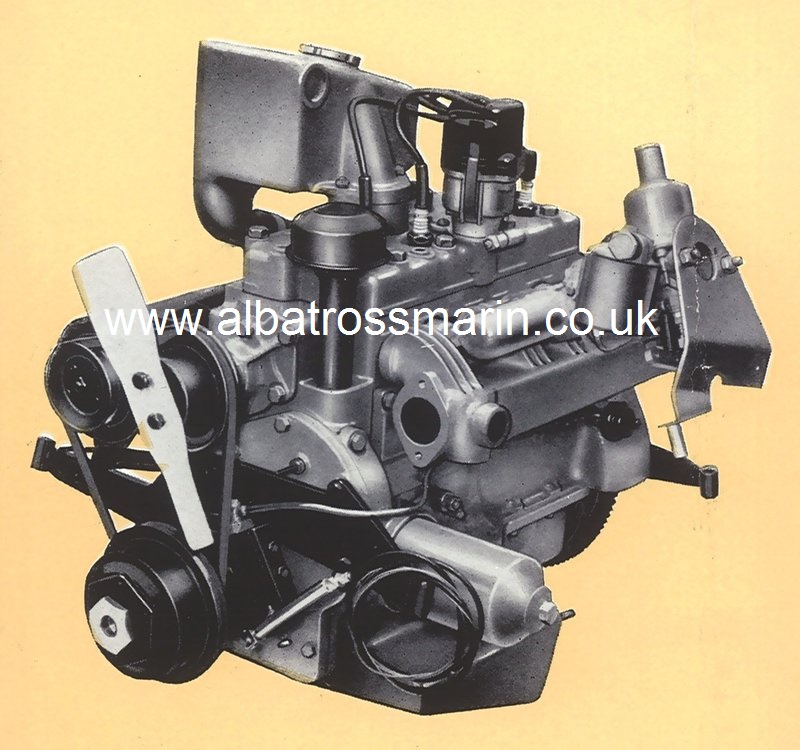
Mk1 continental at rest
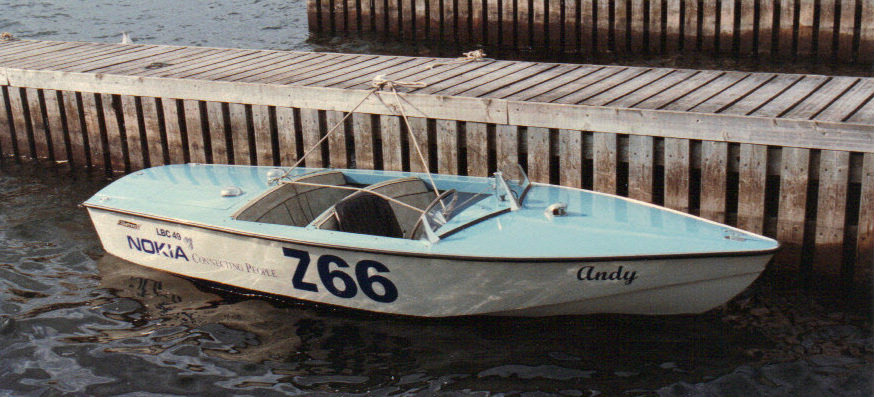
Albatross first made the new Continental model in 1957. It came with the 100e engine and was being used in the Mk3 at the time. At 15 feet and 3 inches it was 3 feet bigger than the Mk3, and offered a somewhat compact rear seating area. In addition you were able to order the boat with a Coventry climax FWE 1220 engine in what we now know as stage one spec. i.e. a single 1.1/2 inch SU h4 carbarettor on a custom Albatross Marine inlet manifold and a cast box exhaust.
Note single carbarettor and box exhaust and Ford 10 header
tank
from a MK2 runabout
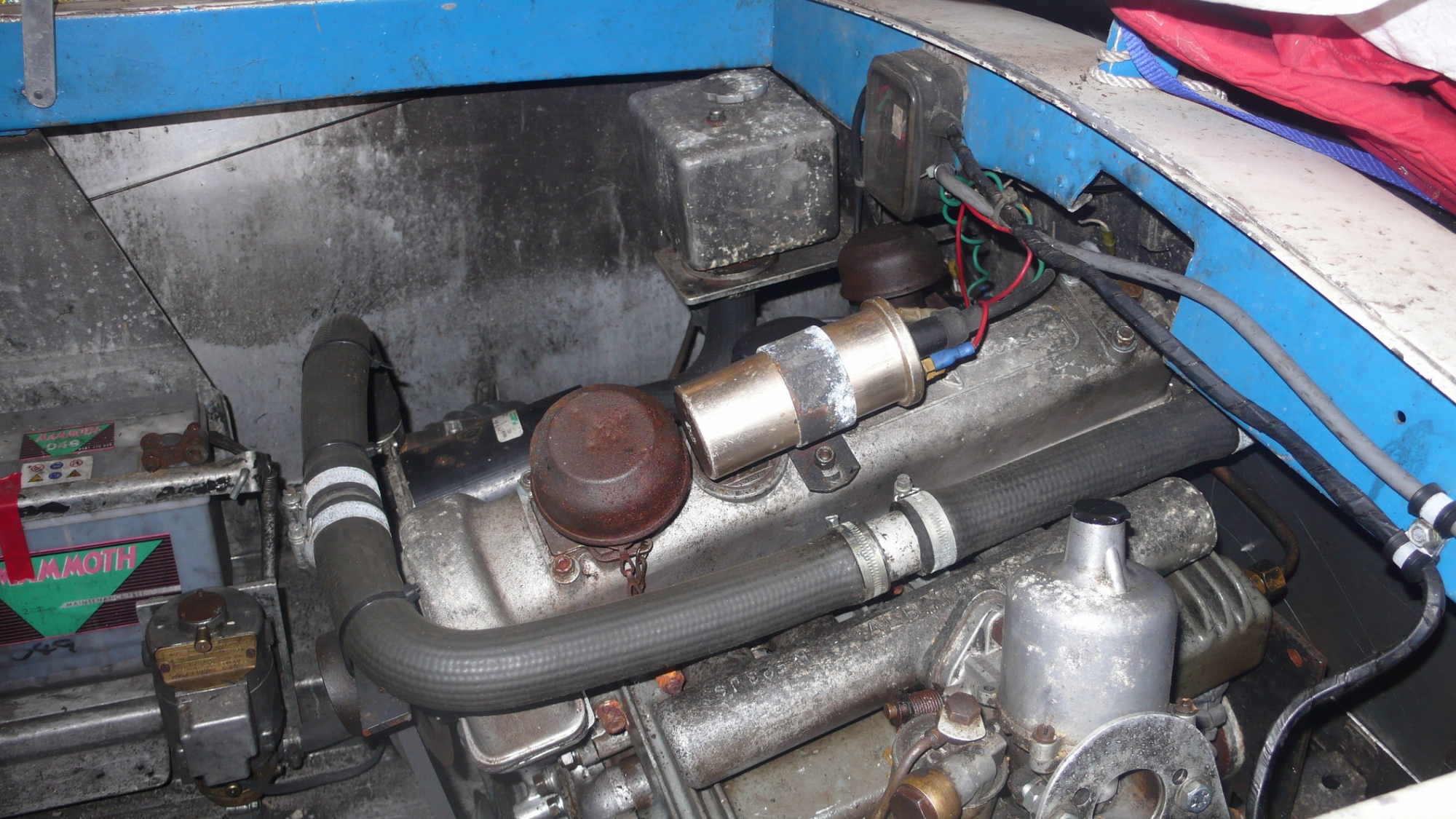
Mk1 dash with extra instruments where the glove box
should be
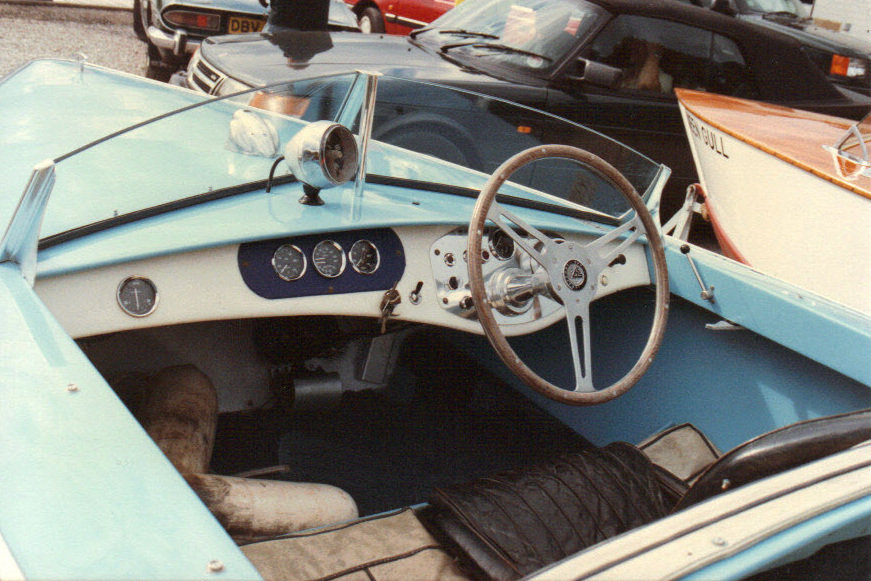
The Mk1.2
The Mk1.2 Continental
Length 15.3
Feet
Weight 784 lbs 100e 734 lbs Climax
Ford 122e Max speed 37 Mph 62 BHP
Climax fwe Max speed 43 Mph 82 Bhp stage two
Year 1961 – 1963
Power 12v
Numbers 1200 - 1244
Price £ 1000.00 Ford 1500 Gt
Price £ 1150.00 Coventry Climax
Sometime later on there is what I shall call the Mk1.2 Continental. The boat now comes with the fifty pence dash board like the A series that was launched in 1960 - so the glove box has gone.They also chose to widen the distance between the engine bearers and drop the 100e in favour of the ford 1500 pre crossflow. Also the Climax came with the stage two as standard. I.e. twin Su h4 1.5 carburettors and Albatross's own four branch exhaust manifold.
Ford 1500 pre crossflow with gearbox
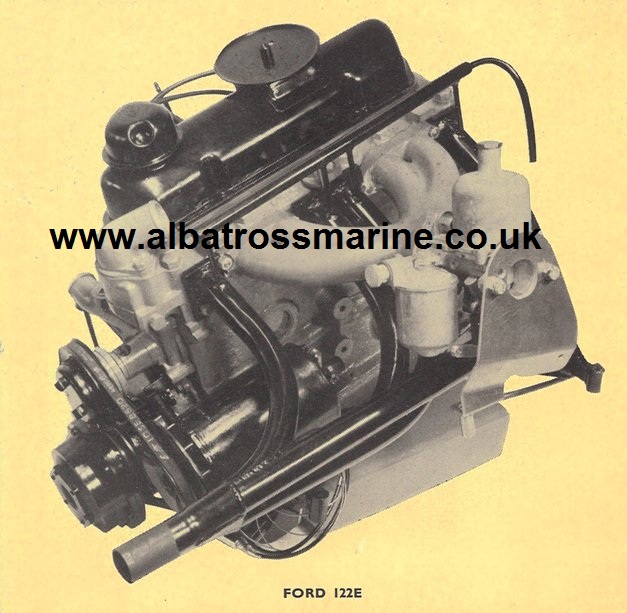
Ford pre crossflow 1500
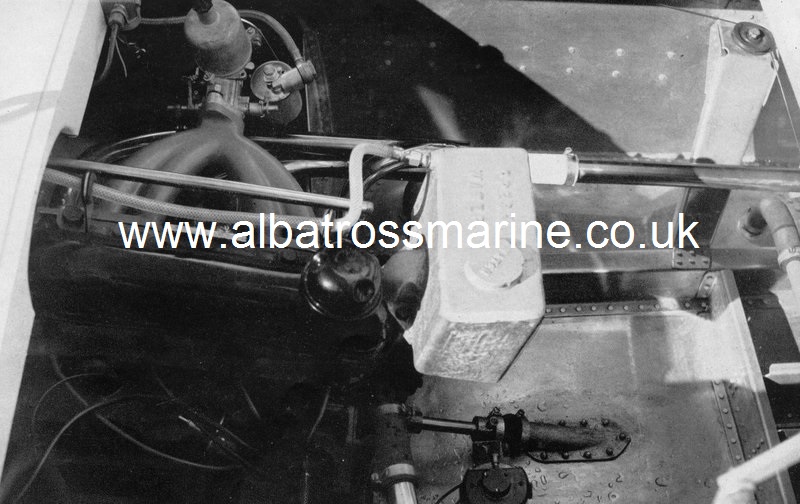
Mk1.2 note the different dash
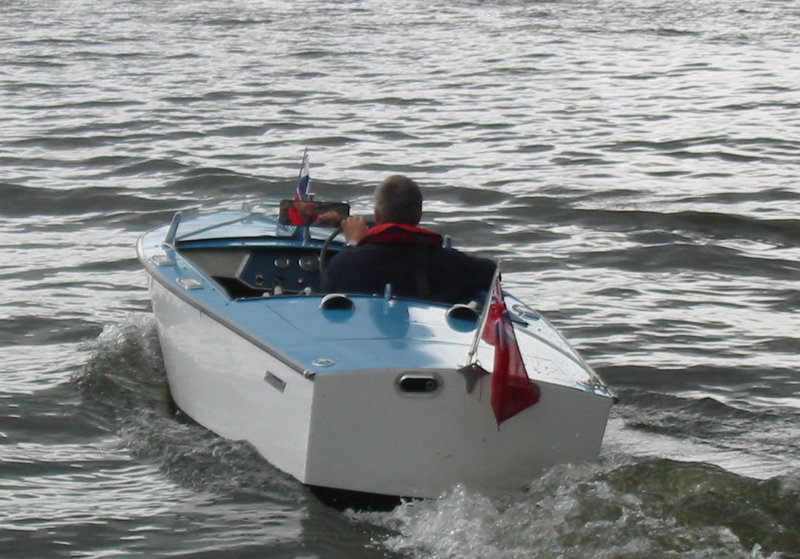
Note stage 2 now with twin SU and four branch exhaust
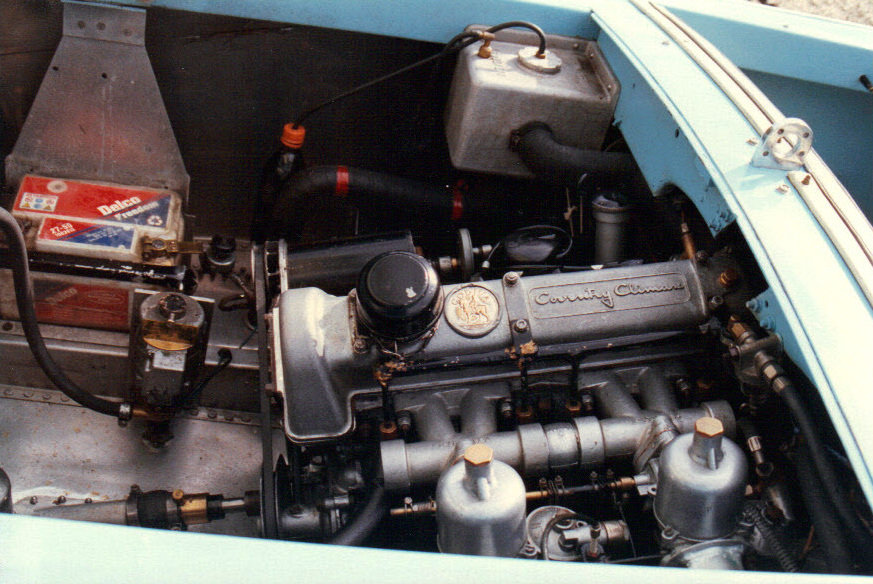
The M2 Continental
Sometime later on there is what I shall call the Mk1.2 Continental. The boat now comes with the fifty pence dash board like the A series that was launched in 1960 - so the glove box has gone.They also chose to widen the distance between the engine bearers and drop the 100e in favour of the ford 1500 pre crossflow. Also the Climax came with the stage two as standard. I.e. twin Su h4 1.5 carburettors and Albatross's own four branch exhaust manifold.
Length 15.3
Feet
Weight 784 lbs 100e 734 lbs Climax
Ford 122e Max speed 37 Mph 62 BHP
Climax fwe Max speed 43 Mph 82 Bhp stage two
Year 1963 – 1967
Power 12v
Numbers 1244 - 1267
Price £ 1000.00 Ford 1500gt
Price £ 1150.00 Coventry Climax
Note the dash and the transom and reclined seat
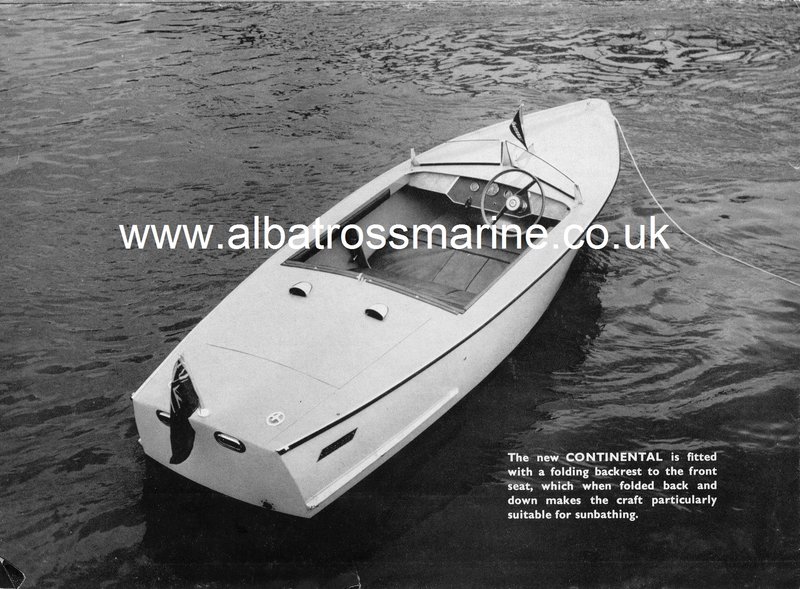
Albatross now took the Mk1.2 and changed the back giving a more pleasing to the eye tumble hull transom. Some boats had two transom vents like on the Mk3 runabout but some did not. Also they added spray rails. They kept the rest of the hull the same. On deck the boats gained external bonnet hinges and some had only one central cleat while others had the more traditional two. Inside the cockpit the front seat now folded back to create a big sun lounger. The power still came from a choice of the ford 1500 pre crossflow or the stage 2 Climax FWE .
Albatross A series
The A series
Length 13.1
Feet
Weight 720 lbs 122e 670 lbs Climax
Ford 122e Max speed 39 Mph 62 BHP
Climax Fwe Max speed 45 Mph 82 Bhp
Year 1960 – 1965
Power 12v
Numbers A1 - A105
Price £ Ford 1500 Gt
Price £ Coventry Climax
In 1960 Albatross replaced the Mk3 with the new A series model. The boat was some four inches bigger and for the first time the lines of the boat were very different from the Mk1-2 and three. This is the boat that is being called the baby Riva because of its beautiful lines. Also instead of being primarily designed around the E93A/100E the boat was designed primarily to be powered by the FWE Coventry climax, the king of albatross power plants.
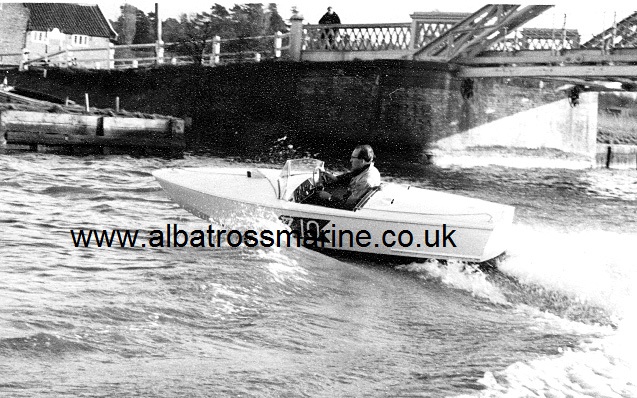
Climax powered A series
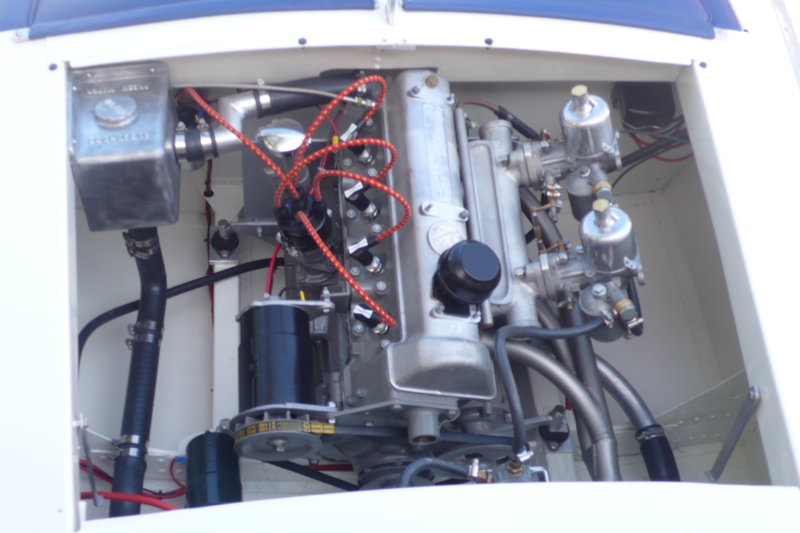
Climax stage three 1220 FWE
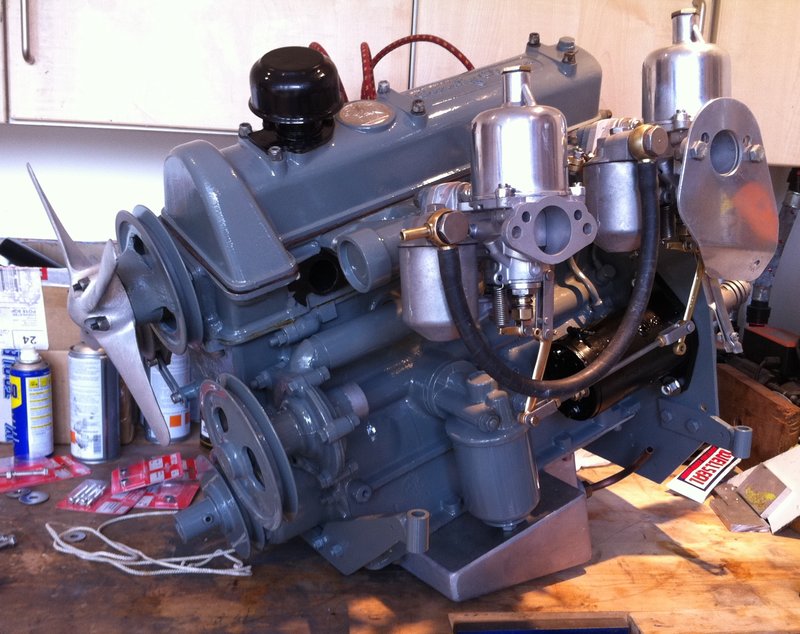
There was also an option to have a Ford 122e powered boat instead. This was a cheaper option and came with a three blade prop instead of a two blade that would be found on the climax boats. The other differences were that the ford was making 62 BHP while the Climax was making 82 BHP. The other area that these two engines differed in was their weight. The climax being all alloy comes in at about 100 kg, while the ford was cast iron and a bit of a porker at about 130kg.
Ford
105 pre crossflow
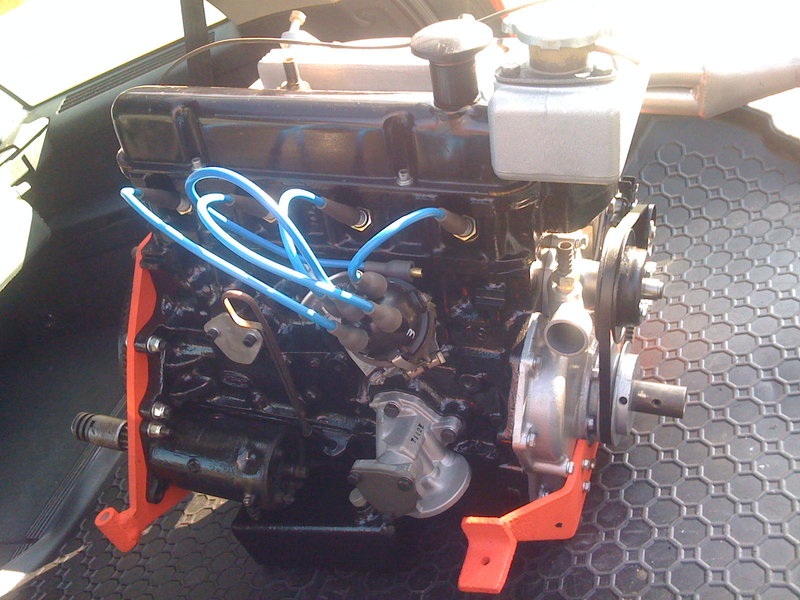
As a consequence the climax boats were some what faster than the ford powered boats. The fords were ment to do 39Mph and the climax would do 45Mph. In reality today with some engine work in conjuction with prop work we are seeing fords top out at 44mph and climax at 48mph.
A
series at rest
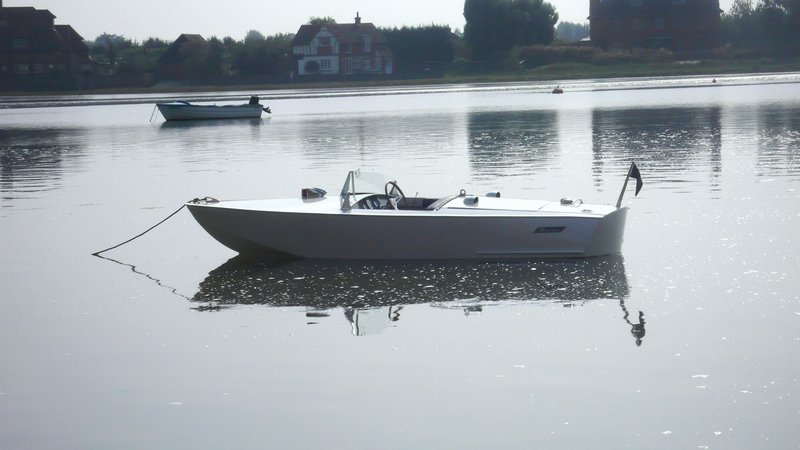
The slipper stern
and
Corsaire
The Slipper Stern
Length slipper 17.6 Feet Length Corsaire 15.6 Feet
Weight 850
lbs
Sunbeam
1500 85 BHP
Year 1961 – 1965
Power 12v
Numbers 2000 - 2027 Corsair numbers 2012 - 2017
Thought to have been first launched in 1961, the slipper started life as a continental that was cut about from behind the rear seat bulkhead and had the back extended to make the boat longer (17 Feet). The boat forward off the rear seat is the same as the continental. Numbers for Slippers start at 2000 and the highest number seen so far seen is 2027
Slipper 2000
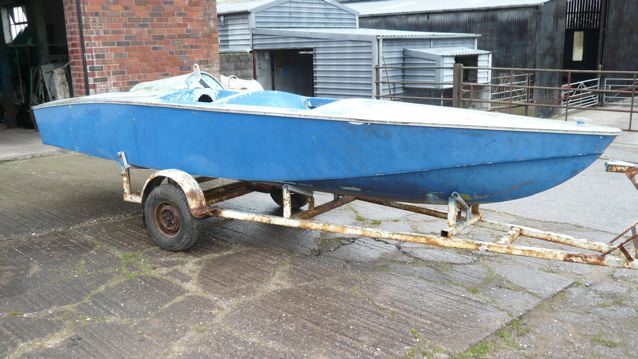
In the engine bay is where the boat starts to really differ from the continental. The engine rails are much bigger in depth and size than the continental.
2000 Note the joining plate on the side, and the large bearers.
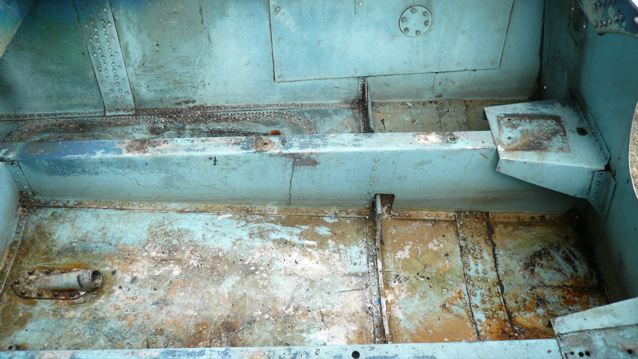
The slipper is the only left handed drive Albatross in the fleet apart from the crusers and if you look carefully the dash is the same shape as a Mk2 but the other way around.
Two seater Corsair note the bucket seats
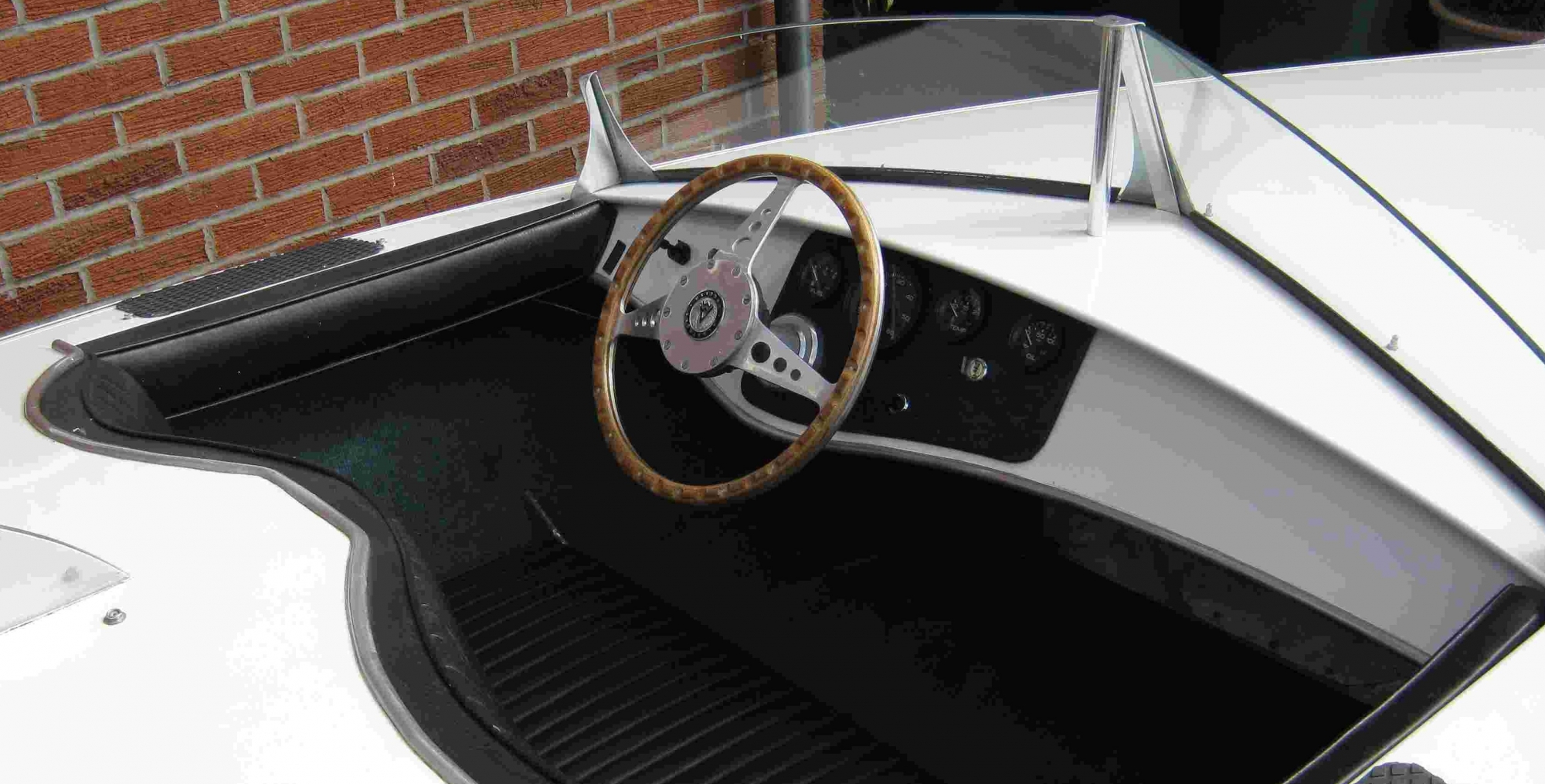
Four seater on the beach. Note the hump on the engine cover only
seen on the four seater.
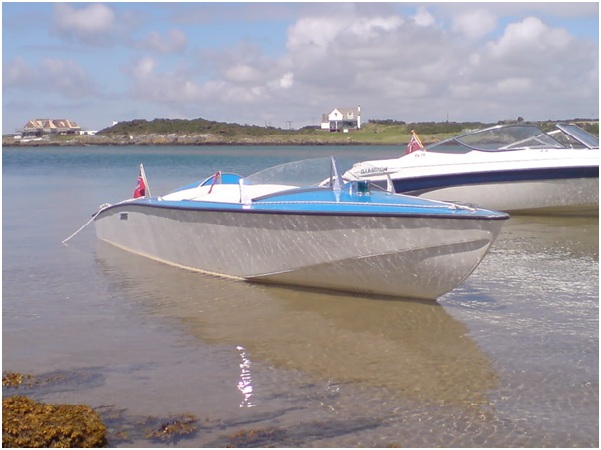
Here
you are looking at the Alpine power plant in a Corsair. Note the
water tank in front of the engine only found on the Corsair, while
the Slipper has a tank on top of the engine. The bit that makes it
most different in Albatross terms is that it is the only engine in
the range that has the engine the other way around. There is no
custom sump or front cover but it does come with its own thrust box
in front of the bell housing.
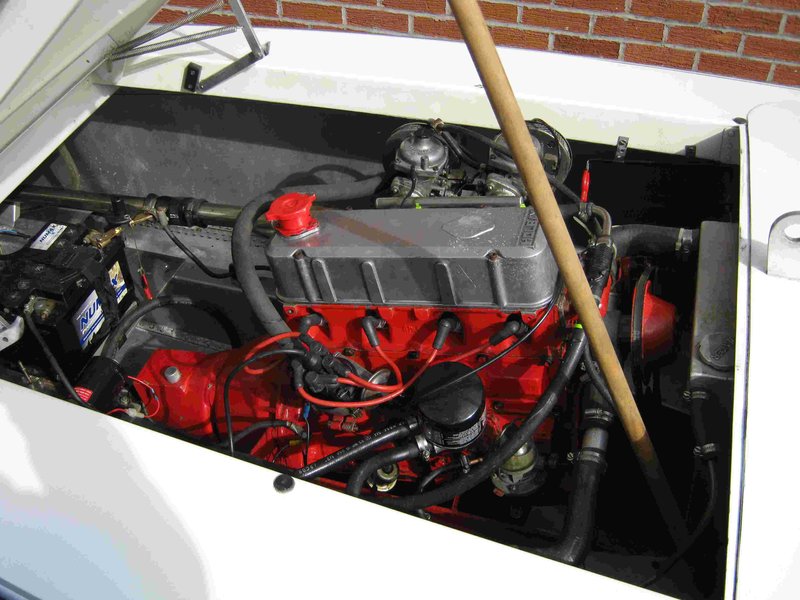
Albatross Slipper thrust box
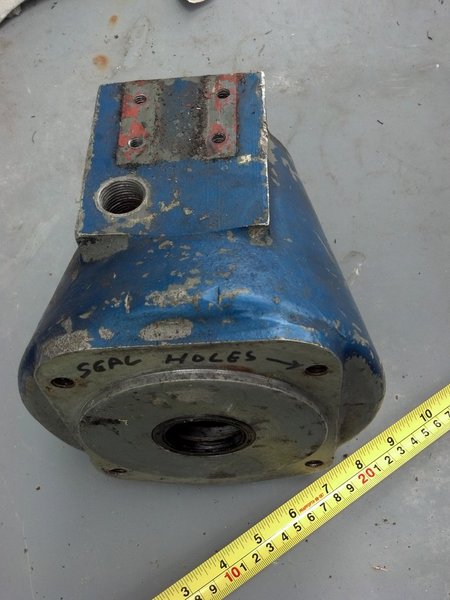
One of the six albatross Corsair’s
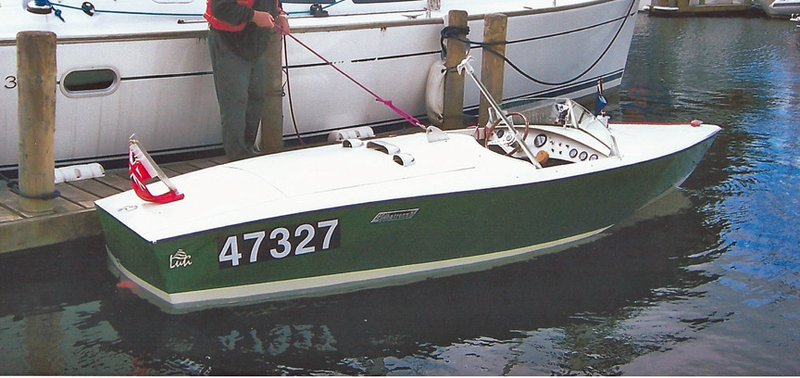
Gay Jane
Gay
Jane
L.O.A 42 Feet
Beam 12.6
Draft 3 Feet
Displacment 6 1/4 Tons
Engines Perkins Diesel Sm6 2 x 100 Hp
Top speed 22 knots
Year 1953
Price £ 15000.00
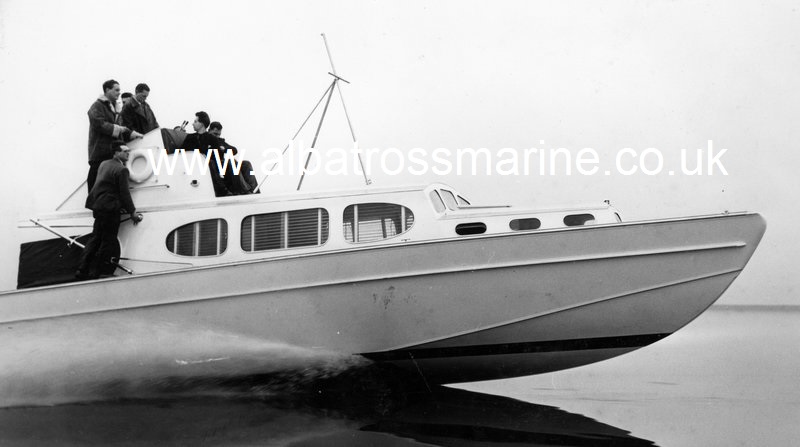
Twin Pekins 6 cilinders in Gay Jane
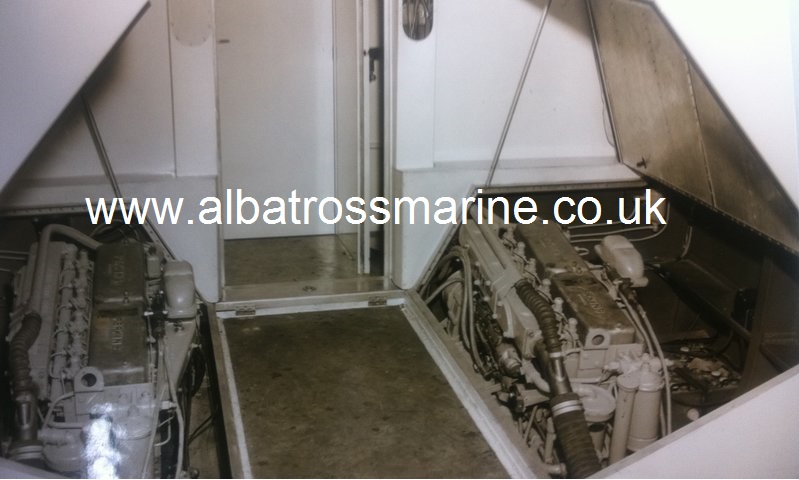
24 Foot Cruiser
Albatross Cruiser
L.O.A
24 Feet
Beam
7.5
Draft
1.5 Feet
Displacment 2608 LBS
Engines tyes Perkines Diesel X 2
Ford 100e x 2
Ford 1500 pre Crossflow x 2
Top speed 26 Mph 100e
29 Mph Diesel
36
Mph 1500
Crossflow
Year 1960 - 1966
Price £ 3500.00
24 Feet 100e powered Cruiser
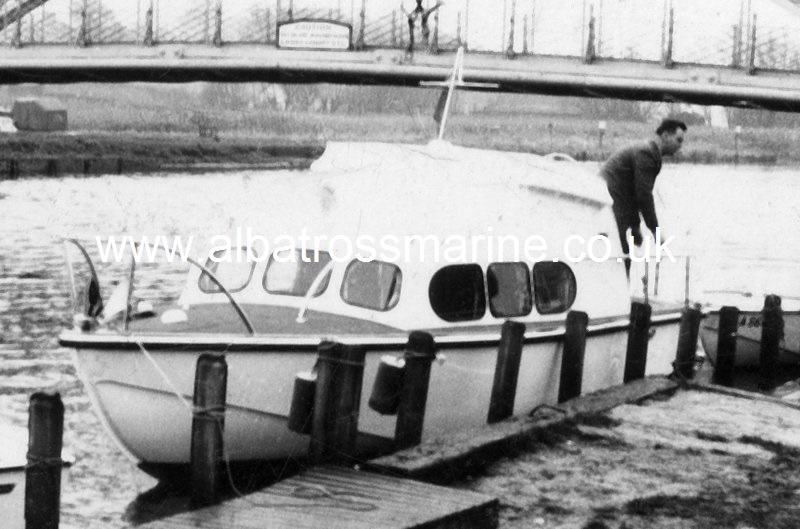
24 Feet Diesel powered Cruiser
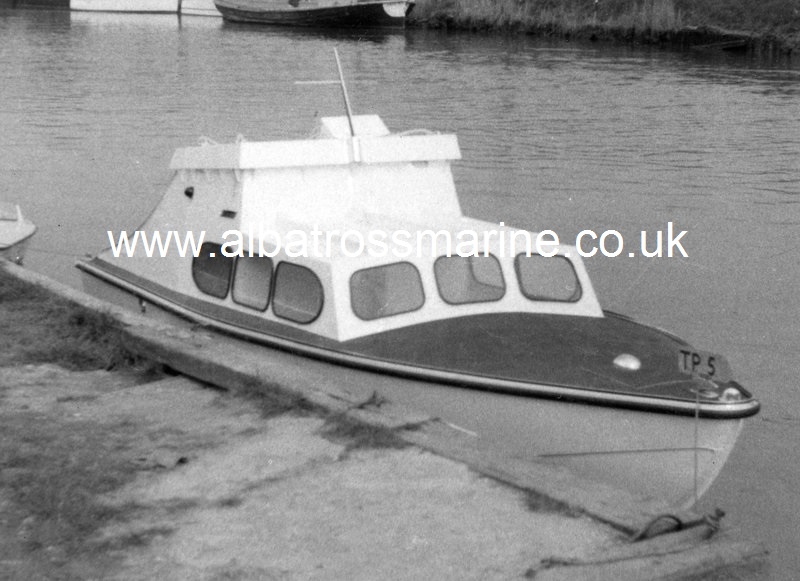
If you have some more info on the boats or would like to point out
my mistakes please feel free to email me.